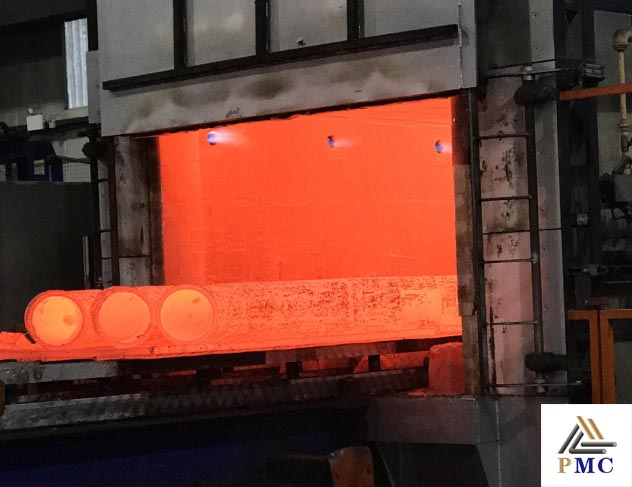
Quenching Method for Deformation and Cracking of Seamless Steel Pipe
The choice of quenching method is mainly based on obtaining martensite and reducing internal stress, workpiece deformation and cracking. Commonly used quenching methods include single-medium quenching, double-medium quenching, graded quenching and austempering.
Austempering is one of the effective quenching methods to reduce the deformation and cracking of seamless steel pipes (SMLS) and seamed steel pipes (straight seam steel pipes, spiral steel pipes and erw steel pipes), but how to use this process correctly should be based on the material, size, hardness and toughness of the steel pipes, Deformation requirements, as well as specific working conditions, etc. are reasonably selected. The following issues that need to be paid attention to during austempering are summarized as follows for reference by heat treatment operators.

1. For isothermal tempering of steels with low hardenability such as carbon seamless steel pipes, the quenching heating temperature should be appropriately increased, the purpose is to increase the stability of austenite, and avoid and prevent high-temperature non-shelled steel in the isothermal process. body transformation.
2. Austempering is limited by steel type and steel size. The basic principle of austempering is to ensure that the seamless steel pipe does not undergo high-temperature transformation during the cooling process. Therefore, the steel type and size of the seamless steel pipe directly affect the quality of austempering. The general requirement is that the effective thickness of the carbon steel seamless steel pipe should not be greater than 5mm, and the effective thickness of the alloy steel should be below 30mm. From the perspective of carbon content, carbon steel with 0.4% to 0.6% is not suitable for austempering, and carbon steel with more than 0.6% can be austempered.
3. The temperature and time of austempering should be determined according to the performance requirements of the steel pipe and with reference to the C curve of the steel type. The principle is that all austenite is transformed into lower bainite. For the cooling medium, a nitrate bath solution is usually used. In order to ensure the stability of the temperature, a cooling device should be added to the medium to prevent the medium temperature from rising and affecting the quenching quality. In addition, the length of the isothermal time should be based on the end of the structural transformation of the seamless steel pipe. If it is too long, the work efficiency will be reduced, so it should be taken seriously.
4. Some seamless steel pipes that have been austempered can not be tempered. However, for partially bainite quenched workpieces, the internal retained austenite will be transformed into martensite in the subsequent air cooling process, so tempering must be carried out to eliminate brittleness and stabilize dimensions. It should be noted that tempering The fire temperature should be lower than the isothermal temperature.
Permanent Steel Manufacturing Co.,Ltd has been committed to being a major supplier of quality kinds of carbon steel pipe, stainless steel tube, hollow section, casing pipe, numerous types of piping equipments including Bend, Cap, Coupling, Elbow, Reducer, Stub End, Tee, Olet, Joint, Gasket, etc.As a factory,which specializing in the production, processing and sales of various steel pipes and pipe fittings size enterprises, headquartered in Hunan, the production base is located in Shandong and Tianjin.
Go here to learn more about " 5 Heat Treatment Processes for Seamless Steel Pipes"


